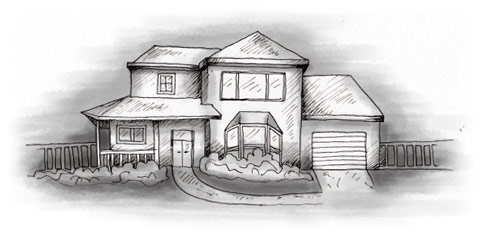More and more people are looking at properties further from the coast where prices are lower and plenty of bargains are still available. If this is you, then our advice is that you to keep this article. The reason for this is because a lot of these properties often have an illegal overbuild or they may not even be registered. As long as you follow some guide lines and you are aware of possible pitfalls, you’ll be alright.
No one likes paying tax, this very much applies to the Spaniard too. It is not unusual for land to have been owned by the same family for centuries. Because one needs to start paying property/ land tax as soon as it’s registered this is put off until the land or property is sold. The tax is called IBI and it stands for Impuesto sobre Bienes Inmuebles. When you decide to purchase land, with or without property on it, don’t pay a deposit until a document called Nota Simple is available. This is an extract of the deed. If the land is not registered there will not be one available. If there is a property on the land but the property is not specified on the Nota Simple, it is not registered.
Let’s start with the land. If this is not registered a catastral number needs to be arranged. This is arranged through the Ayuntamiento (town hall). As soon as it has got a catastral number IBI is applied, probably with some delay. However this is not enough, it also needs to be registered in the land registry – Registro de la Propiedad. The time this takes varies from place to place. Don’t forget to agree with the vendor who is to pay for all these costs.
Then the property. Let’s assume the land is registered but not the property. The property needs to be at least 4 years old in order to have it registered. This is the period of time the local council has to discover illegal builds and to ask to have them pulled down. To have it registered a qualified architect needs to go to the property and measure the build. He will draw a complete plan of the property. This is then submitted to the town hall where it will be stamped and authorized for registration. It is at the notary you will subsequently have the property registered. This is the way it works in Andalucia. The law changed earlier this year. Before it was sufficient the architect’s report was stamped by the Colegio de Arquitectos in the area. This may still be the case in other parts of Spain.
When land or property has not been registered there is always a risk there may be a charge by a private person or official body because of an unpaid debt, waiting to be added on once the property is registered. This is common in Spain to take a charge on a property to make sure the debt is eventually paid. When the land/ property have been registered in the land registry there may be a note on the Nota Simple which refers to “La Ley de Hipoteca”. This is a warning to banks to say that during a period of time, normally between 2-5 years, the bank should be very cautious in giving a mortgage on this property, since during this period a charge may be taken against it. Banks in Spain insist on always taking the first charge and seldom accept a second charge.
We hope this information has been and will be useful. If you are faced with any of the above issues there are solutions to all. Remember, it’s when you have finance on a property most problems are discovered. Always make sure to use a professional broker who will at the end of the day be worth every penny. The staff at Orange Finance is very experienced. If you have any queries or if you would like a professional broker to arrange the finance for you then just phone or visit them.
Article by Orange Finance
http://www.orangefinance.eu.com/


